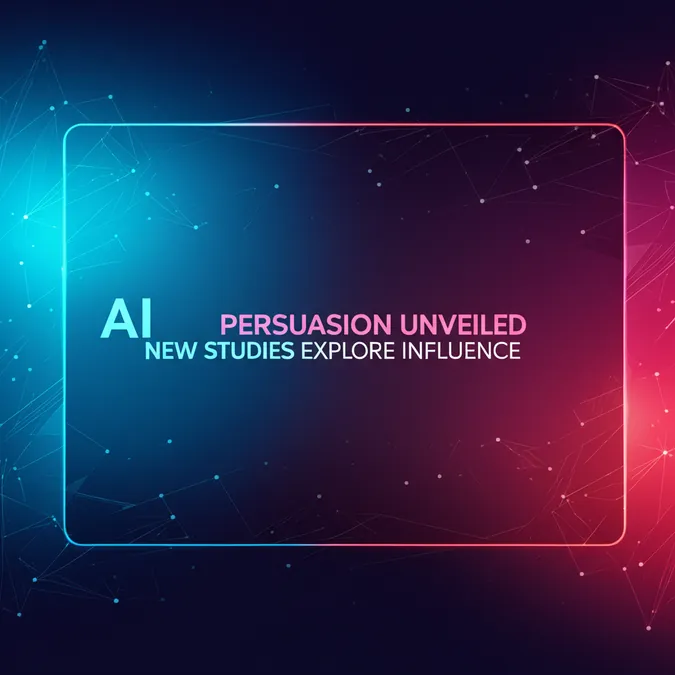Developer Offer
Try ImaginePro API with 50 Free Credits
Build and ship AI-powered visuals with Midjourney, Flux, and more — free credits refresh every month.
AI Workplace Workers Demand Influence
The launch of ChatGPT in late 2022 sparked widespread discussion about artificial intelligence, and by May 2023, these conversations had intensified. Screenwriters, concerned about AI's role in scriptwriting, initiated the Writers Guild of America’s (WGA) strike, which lasted 148 days. Since generative AI emerged, a critical question has dominated discussions: Is AI a threat to our jobs?
 Photo: Getty Images
Photo: Getty Images
This post delves into that question, examining what occurs when AI becomes a bargaining chip, the anxieties unions face, the protections they seek and achieve, and how management can collaborate with unions as strategic allies.
One thing is undeniable: as interest and apprehension regarding AI grow, workers globally are not waiting for comprehensive regulations. Instead, they are proactively bringing the issue to the negotiating table.
Workplace AI Concerns
While ChatGPT and AI offer numerous benefits, workers harbor significant concerns about their impact. Job displacement is a major worry, vividly illustrated by the WGA strike.
Unions also highlight employers' frequent lack of transparency concerning AI usage. Instances have occurred where workers only discovered AI tools during bargaining, after requesting information. This necessitates employees to be vigilant about workplace changes to understand AI's effects, whether positive or negative.
Surveillance and monitoring through AI in algorithmic management are also growing concerns. Some companies reportedly use AI to track employee communications and sentiment. This, combined with the pressure to compete with AI, can escalate stress, impacting workers' mental and physical health.
Gig workers often report opacity in decision-making processes and task assignments. They are monitored via tracking and delivery times and face penalties for rejecting jobs. The ILO’s platform economy report underscores this issue, contributing to discussions on standards for platform worker protection.
Algorithmic bias and errors present further challenges. For instance, an AI performance evaluator trained predominantly on data from white male call center agents might unfairly score women and minorities, affecting their ratings, bonuses, and shifts.
Unions Bridging Governance Gaps
Unions have noted that many workers feel daunted by AI's technical aspects and hesitant to discuss concerns with employers. Consequently, unions are taking the initiative to address these issues in collective bargaining.
These discussions cover a wide array of topics. For example, the Culinary Workers Union in Las Vegas negotiated a severance package requiring employers to pay $2,000 per year of service if an employee is laid off due to AI.
Following extensive talks, the WGA and studio executives reached an agreement establishing safeguards for generative AI use. This ensures writers maintain control over their work and decisions about AI, positioning AI as a supportive tool rather than a replacement for human writers.
The Ziff Davis Creators Guild also ratified an agreement stipulating no layoffs or base pay reductions due to generative AI. It includes forming an AI subcommittee to assess AI use and requires reasonable notice before AI implementation.
Most recently, in May 2025, the Communication Workers of America (CWA) secured a tentative contract with ZeniMax Media (a Microsoft subsidiary) for quality assurance testers. This agreement includes commitments from ZeniMax to use AI solely for employee support and productivity enhancement without causing harm, and provides the right to appeal AI decisions to humans.
“Video games have been the revenue titan of the entire entertainment industry for years, and the workers who develop these games are too often exploited for their passion and creativity,” stated Jessee Leese, a QA tester at ZeniMax and member of the ZeniMax Workers United-CWA bargaining committee, in a CWA press release. “Organizing unions, bargaining for a contract, and speaking with one collective voice has allowed workers to take back the autonomy we all deserve.”
Overall, trade unions engaged in bargaining perceive AI as a significant workplace disruptor. Their goal is not to obstruct AI use but to empower their members, ensuring they have a voice and can collaborate with employers to make AI a supportive, not detrimental, force.
Research indicates that AI bargaining is nascent but rapidly gaining importance. UC Berkeley is developing a technology bargaining inventory, “a structured, searchable resource built to support organizers, negotiators, researchers, and other advocates,” according to Lisa Kresge, lead researcher at UC Berkeley’s Center for Labor Research and Education. This inventory will encompass over 500 collective bargaining agreements from various industries.
Kresge notes an interesting finding from this research: “Unions are negotiating around specific workplace technologies, rather than negotiating around technology in general.” She explains that while historical contracts had pre-adoption language for technology, “what we’re seeing a lot more of now, is really very specific provisions around how employers can use specific technologies.”
Engaging Labor Unions as Strategic Partners
Given AI's increasing workplace presence and workers' desire to shape its use, management must view AI as a collective bargaining matter.
Here are five actions management can adopt:
- Foster a Safe Environment for AI Discussions: AI's technical nature can intimidate employees. Proactive leaders should create forums like AI or technology subcommittees, comprising management and workers, for employees to voice concerns.
- Engage Throughout the AI Lifecycle: Involve employees and unions before deploying AI systems and continue this engagement post-implementation. This helps management understand perceptions and address issues arising from employee interaction with AI tools.
- Invest in AI Impact Training: Beyond upskilling workers in AI, it's crucial to understand AI systems' risks and impacts. Companies should invest in AI literacy for both management and staff.
- Practice Proactive Transparency: Address concerns about employer transparency by proactively sharing detailed plans and impact analyses before implementing any AI tool.
- Align Bargaining with Public Statements: If management publicly champions responsible AI, this stance must be consistent with its bargaining table actions. Discrepancies can erode trust and credibility.
As AI tools become embedded in business functions and unions become more vocal, companies cannot afford unilateral implementation. Partnership with the workforce is essential.
Compare Plans & Pricing
Find the plan that matches your workload and unlock full access to ImaginePro.
| Plan | Price | Highlights |
|---|---|---|
| Standard | $8 / month |
|
| Premium | $20 / month |
|
Need custom terms? Talk to us to tailor credits, rate limits, or deployment options.
View All Pricing Details

